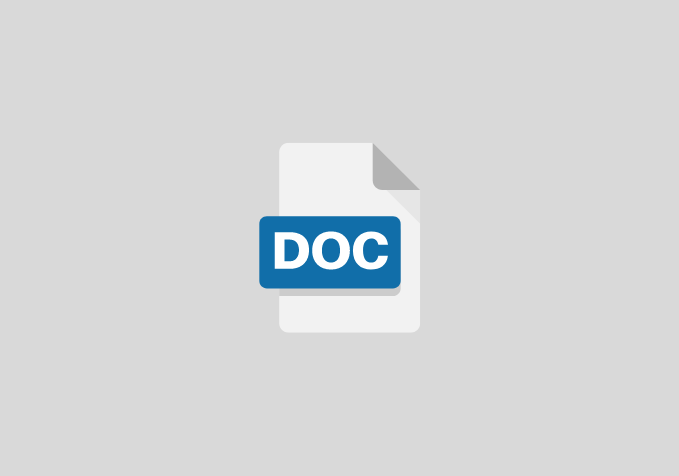The Implications for the Management of Organisational Behaviour of the Introduction of New Technologies
Chapter One
Preamble of the Study
New technologies are a game-changer within the organisation in today’s dynamic business environment, and their impact has been a primary driving force behind most contemporary innovations. It is developing and growing the way things are done in the world today. From a platform that allows effective communication to innovative symposium tables that allow everyone to have smooth control of their device even while having shared with everyone, the effect of digitalisation is simply indispensable in modern workplaces (Kerl, 2020). As a result, the corporate environment must keep evolving and keep up with the growing infrastructural improvement and innovation by incorporating new technological tools and equipment into the work environment. The goal of implementing new technology in the work environment is to solve complex problems, eliminate inefficiencies and reduce bottlenecks. While some answers are self-evident, others necessitate a little or a lot of research (Attfield, 2021).
Chapter Two
Review of the related Literature
The Need for Technology in Company X
A technologically driven company can equip its remote employees, achieve cost-saving economic advantages, and communicate with employees regardless of where and how they work. It could provide significantly greater services or products, improve customer experience and engagement, and improve efficiency while boosting performance to increase profitability (Nova, 2020; Judge et al., 1999). Overall, employing technology efficiently and effectively gives a competitive edge. It is critical to recognise that technological innovation has become crucial for any company’s performance and competitiveness.
In an extremely competitive and saturated business environment, any opportunity to get abreast is worth seizing. If you are not utilising the technological advancement in our organisation, we were falling behind the competition (Armenakis & Bedeian, 2019).
Making a significant technological modification is extremely difficult. Company X have expended significant time and effort deciding which technological advances to explore and planning the implementation. Technology is an important aspect of the business environment in the twenty-first century that any organisation that does not have some degree of technological expertise would almost certainly fail (Wamberg & Banas, 2000). It’s that important. Company X was overwhelmed by infrastructure, software, and the technology’s interconnection. Hence the following conditions propelled the need for technology in the company:
- Digitalisation is a must-have for a 21st-century workplace. Shift patterns have become quite unstable, as opposed to the previous twelve-hour employment sequence (Pidereti, 2000). Economic globalisation has created opportunities to serve millions of people at once all over the world at any given time. And with this movement came the imperative need to optimise many of the business processes. This approach involves everything, from monitoring staff members’ productivity to ensuring global operational efficiency to customers. This made Company X to introduce new technologies in order to adapt to the chaning world and business environment.
- The need to improve the company’s efficiency: At its most basic, new technologies enable the manager and staff to be more efficient and effective (Sonenshein, 2009). Company X was able to organise marketing activities and appointment scheduling, track administrative overhead and complete many time-consuming tasks that previously took time in minutes. Be it a file management tool that allows for easy editing or a computerised cash management platform that pulls data at the touch of a click; automation simplifies organisational structures and systems.
- The need to efficiently deliver to customers: Whatever the business sector or career choice, there is a technology that has been crafted to make work easier. Numerous technologies save lives, ensure customer right to privacy, and ensure companies are compensated through insurance. Employing technology into our operations was critical in improving positive customers experience while meeting customers’ requests in real-time. Company X service delivery became excellent and more customers centric. This was so because the services processes were automated.
- Improving Company X Communication Skills: Company X was going through challenges that required technology to aid communication and enhance feedback mechanism between top management, middle line managers, and other cadres of staff. The issue of COVID-19 (global pandemic) also created the need to enhance our communication pattern.
References
- Angshuman, B. (2019). The Influence of Technology in the Workplace https://blog.vantagecircle.com/technology-in-the-workplace/
- Armenakis, A., & Bedeian, A. (1999). Organisational change: A review of theory and research in the 1990s. Journal of Management, 25(3), 293
- Attfield, B. (2021). 6 steps for introducing technology into the workplace. https://blog.jostle.me/blog/6-steps-for-introducing-technology-into-the-workplace/
- Denis, S. (2019). Ethical Issues When Implementing Organizational Change Student’s Name. https://www.academia.edu/32036249/Ethical_Issues_When_Implementing_Organizational_Change_Students_Name
- Emma, L. (2019). Importance of Technology in the Workplace. https://smallbusiness.chron.com/importance-technology-workplace-10607.html
- Hunter, M. (2019). How Introducing New Technology Into the Workplace Affects Company Culture https://www.orginc.com/blog/how-introducing-new-technology-into-the-workplace-affects-company-culture
- Judge, T. A., Thoresen, C. J., Pucik, V., & Welbourne, T. M. (1999). Managerial Coping With Organizational Change: A Dispositional Perspective. Journal of Applied Psychology, 84(1), 107-122
- Kerl, K. (2020). 5 Steps to Successfully Implementing New Technology in the Workplace https://www.selectonellc.com/blog/introducing-new-technology-to-your-organization
- Leedy, i. (2021). Technology in the workplace. https://www.protectedtrust.com/technology-in-the-workplace/


